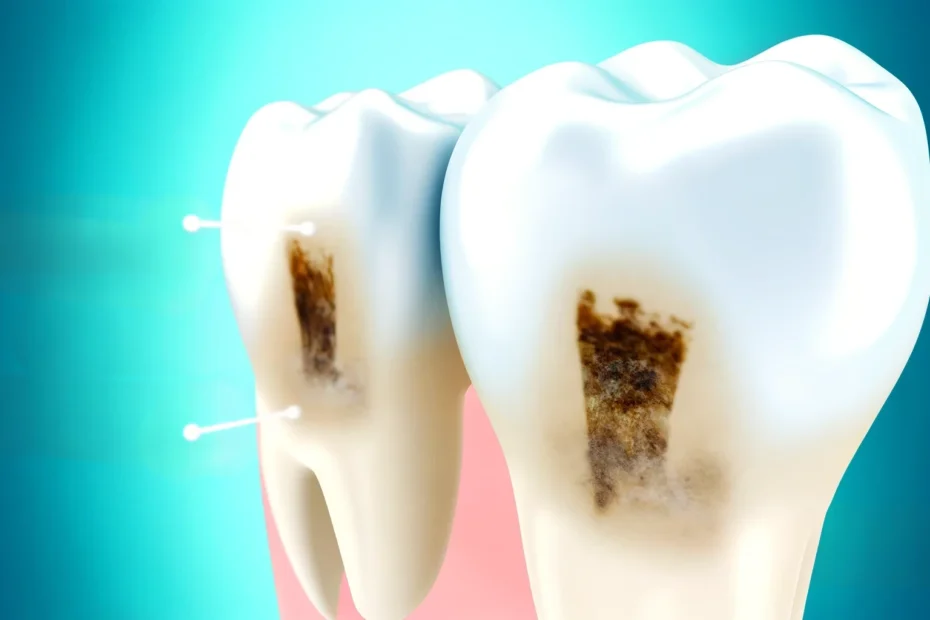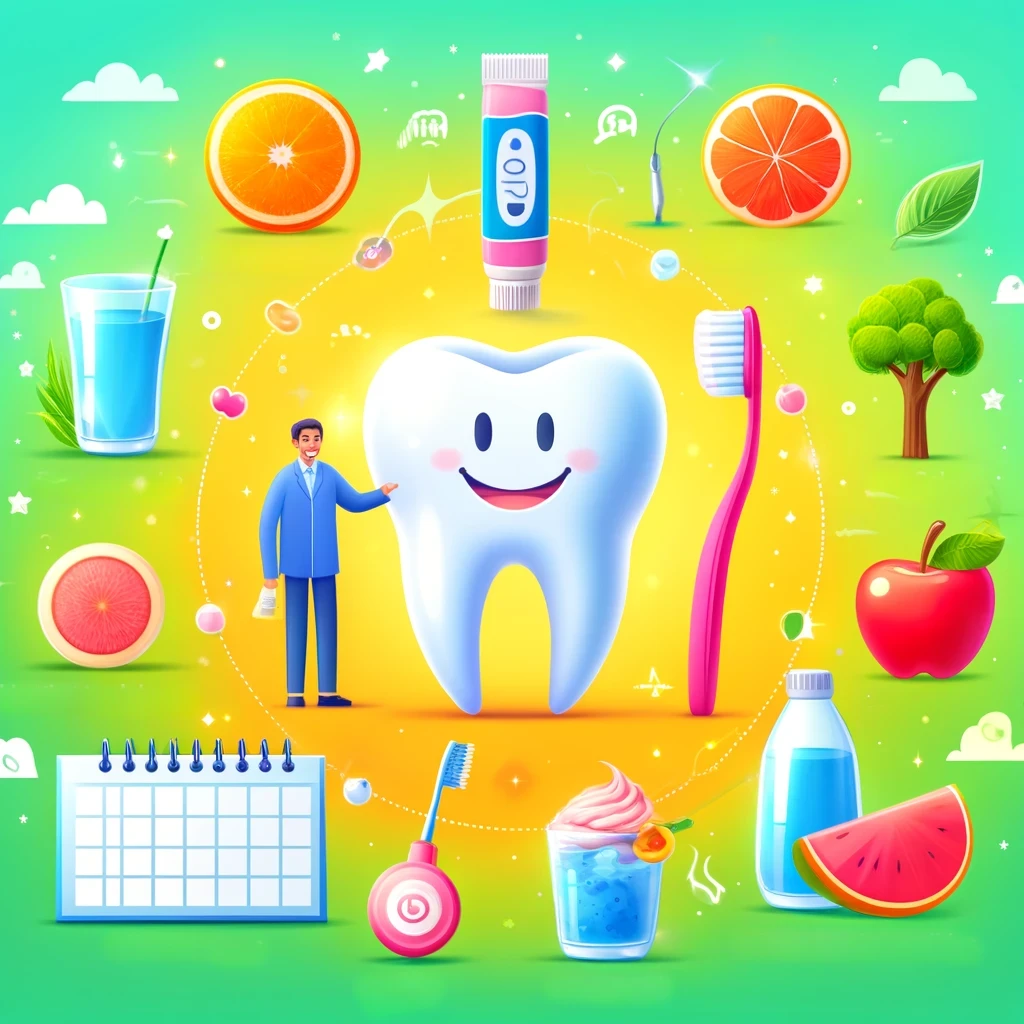Imagine enjoying your favorite meal, only to be interrupted by a sudden, sharp pain in your tooth. This discomfort is often a sign of cavities—tiny holes in your teeth that can lead to significant pain and more severe dental problems if left untreated. Cavities disrupt your daily routine and can lead to costly dental treatments and the potential loss of teeth. Understanding the causes, symptoms, and preventive measures for cavities is crucial to maintaining a healthy, pain-free smile.
Cavities, also known as dental caries or tooth decay, are a common dental problem affecting people of all ages worldwide. They are more than just a source of discomfort; untreated cavities can lead to more severe dental issues and negatively impact overall health.
This comprehensive article will explore the causes, prevention strategies, and treatment options for cavities in teeth.
What are Cavities in Teeth?
Cavities are small holes or openings that develop in the hard surface of your teeth, called enamel. They occur when acids produced by bacteria in the mouth break down the enamel, leading to tooth decay. Cavities can vary in size and severity, but they should not be ignored, as they can grow and cause significant discomfort over time.
As cavities progress, they can penetrate deeper layers of the tooth, reaching the dentin and eventually the pulp, where nerves and blood vessels reside. This can increase sensitivity to hot, cold, and sweet foods and persistent toothaches. If left untreated, cavities can lead to severe infections, abscesses, and even tooth loss, underscoring the importance of early detection and prompt treatment to preserve dental health and avoid more invasive procedures.
Refrain from brushing your teeth regularly is a primary contributor to the development of cavities. When you don’t brush, food particles and sugars remain on your teeth, creating an ideal environment for bacteria to thrive. These bacteria produce acids as they break down the food particles, and these acids gradually erode the enamel—the protective outer layer of your teeth.
Causes of Cavities
Several factors contribute to the formation of cavities:
- Bacteria: The human mouth is a thriving ecosystem for bacteria, with over 700 species. Some of these bacteria can produce acids as they metabolize sugars and carbohydrates from our food. These acids can attack the tooth’s protective enamel.
- Poor Oral Hygiene: Inadequate brushing and flossing habits allow food particles to linger in the mouth, particularly in hard-to-reach areas between teeth and along the gumline. When these particles are not removed, they serve as a source of nutrition for bacteria, enabling them to thrive and multiply. Over time, these bacteria form a sticky, colorless film known as plaque. Plaque can adhere to teeth and produce acids that erode enamel, leading to cavity development.
- Diet: A diet high in sugary and high-carbohydrate foods fuels the growth of harmful oral bacteria, which thrive on these substances. When you consume sugary and starchy foods, these bacteria break down these compounds into acids, contributing to a more acidic oral environment.
- Dry Mouth: Saliva plays a vital role in oral health by washing away food particles, neutralizing acids, and remineralizing tooth enamel. When an individual experiences a dry mouth or xerostomia, there is a reduced flow of saliva, which disrupts these protective functions. A dry mouth creates an environment where acid-producing bacteria can thrive and easily cause enamel erosion.
Prevention Strategies
Preventing cavities is easier than treating them. Here are some essential prevention strategies:
- Brushing your teeth at least twice daily and flossing are fundamental to good oral hygiene. Brushing helps remove food particles, plaque, and bacteria from the surfaces of your teeth, while flossing is essential for cleaning the areas between teeth where a toothbrush can’t reach.
- Your dietary habits significantly impact your oral health. Sugary and starchy foods are the preferred energy source for cavity-causing bacteria in your mouth. By reducing your sugar and carbohydrate intake, you can limit the food supply for these bacteria. Instead, choose a balanced diet of fruits, vegetables, and dairy products. These foods provide essential nutrients like calcium, crucial for strong teeth and enamel. Moreover, chewing fibrous fruits and vegetables can help clean your teeth naturally and stimulate saliva production, which aids in protecting your teeth against acids. Taking oral hygiene vitamins can also help.
- Fluoride is a natural mineral that plays a vital role in preventing tooth decay. It strengthens tooth enamel and makes it more resistant to acid attacks from bacteria. To benefit from fluoride, use toothpaste that contains fluoride and brush your teeth thoroughly with it. Additionally, you can consider fluoride treatments offered by your dentist, including professional fluoride varnishes or rinses. These treatments are especially beneficial if you are at higher risk for cavities.
- Visiting your dentist for regular check-ups and professional cleanings is crucial to cavity prevention. Dentists have the expertise to detect cavities in their early stages, often before symptoms become noticeable.
Treatment Options
If you suspect or have been diagnosed with cavities, prompt treatment is crucial. Common treatment options include:
1. Fillings:
Fillings are one of the most common and straightforward treatments for cavities. When you have a small to moderately sized cavity, the dentist will remove the decayed portion of the tooth using a dental drill or laser.
This ensures that the cavity doesn’t progress further. After removal, the dentist fills the gap with a suitable material, often amalgam (a durable metal alloy) or composite resin (tooth-colored material). The filling not only seals the cavity but also restores the tooth’s structural integrity and function. It’s a relatively quick and minimally invasive procedure that can prevent the cavity from worsening.
2. Crowns:
In cases where the cavity is extensive, or the tooth is weakened due to substantial damage, a dental crown may be recommended. A crown is a custom-made, cap-like restoration that covers the entire visible part of the tooth above the gumline.
Crowns are typically made from porcelain, metal alloys, or ceramic materials. They protect the tooth from further damage, strengthen it, and restore its appearance. Crowns are often used after extensive decay or following procedures like root canals. They provide long-lasting protection and are especially beneficial for teeth that have lost a significant portion of their structure.
3. Root Canal Therapy:
When a cavity progresses to the innermost part of the tooth, known as the pulp, it can cause severe pain and infection. In such cases, a root canal procedure becomes necessary.
The dentist removes the infected or damaged pulp during a root canal, cleans and disinfects the tooth’s interior, and seals it with a biocompatible material. This procedure saves the tooth from extraction, relieves pain, and eliminates infection. Following a root canal, a crown is often placed to protect and restore the tooth’s strength and function.
4. Tooth Extraction:
Tooth extraction is considered a last resort when a cavity damages a tooth so extensively that it cannot be saved through other means. This typically occurs in cases where the tooth’s structure is compromised beyond repair or if there is a severe infection that poses a risk to oral health. Extraction involves carefully removing the affected tooth by a dentist or oral surgeon.
After extraction, the gap left by the missing tooth can be addressed with options such as dental implants, bridges, or dentures to restore both function and aesthetics. Tooth extraction is only recommended when all other treatment options are insufficient to preserve oral health. After a tooth extraction, careful teeth brushing is essential.
Home Remedies for Cavities in Teeth
While these home remedies can help manage cavity symptoms and reduce bacteria, they are not substitutes for professional dental care. Regular dental check-ups and oral hygiene are essential for effectively treating and preventing cavities.
- Oil Pulling: Oil pulling involves swishing a tablespoon of coconut or sesame oil in your mouth for 15-20 minutes. This ancient Ayurvedic practice helps reduce harmful bacteria in the mouth, lowering the risk of cavities. The oil’s antibacterial properties can also help reduce plaque and gingivitis, contributing to oral health.
- Salt Water Rinse: Rinsing your mouth with a saltwater solution can help reduce inflammation and fight bacteria. Mix a teaspoon of salt in a glass of warm water and swish it around your mouth for a minute before spitting it out. This remedy can help alleviate pain and keep the affected area clean, preventing further decay.
- Garlic: Garlic is known for its antimicrobial properties and can be used to combat cavity-causing bacteria. Crush a clove of garlic to release its allicin, then apply the paste to the affected tooth for a few minutes before rinsing. Alternatively, chewing a raw garlic clove can help reduce bacteria and relieve pain.
- Clove Oil: Clove oil contains eugenol, a natural anesthetic and antibacterial agent that can help alleviate tooth pain and fight infections. Dab a cotton ball in clove oil and apply it directly to the cavity. Leave it on for a few minutes before rinsing. This remedy can provide temporary relief from cavity pain and reduce bacterial growth.
- Aloe Vera: Aloe vera has antibacterial properties that can help combat cavity-causing bacteria. Apply pure aloe vera gel directly to the affected tooth and leave it on for a few minutes before rinsing. Regular use can help reduce bacterial growth and soothe the affected area, promoting better oral health.
Conclusion
Cavities in teeth are a prevalent dental issue that can have serious consequences if left untreated. By understanding the causes, adopting preventive measures, and seeking timely treatment, you can maintain oral health and enjoy a cavity-free smile. Regular dental check-ups and a healthy diet are your best allies in the fight against cavities, ensuring a lifetime of strong, healthy teeth and a bright, confident smile.

